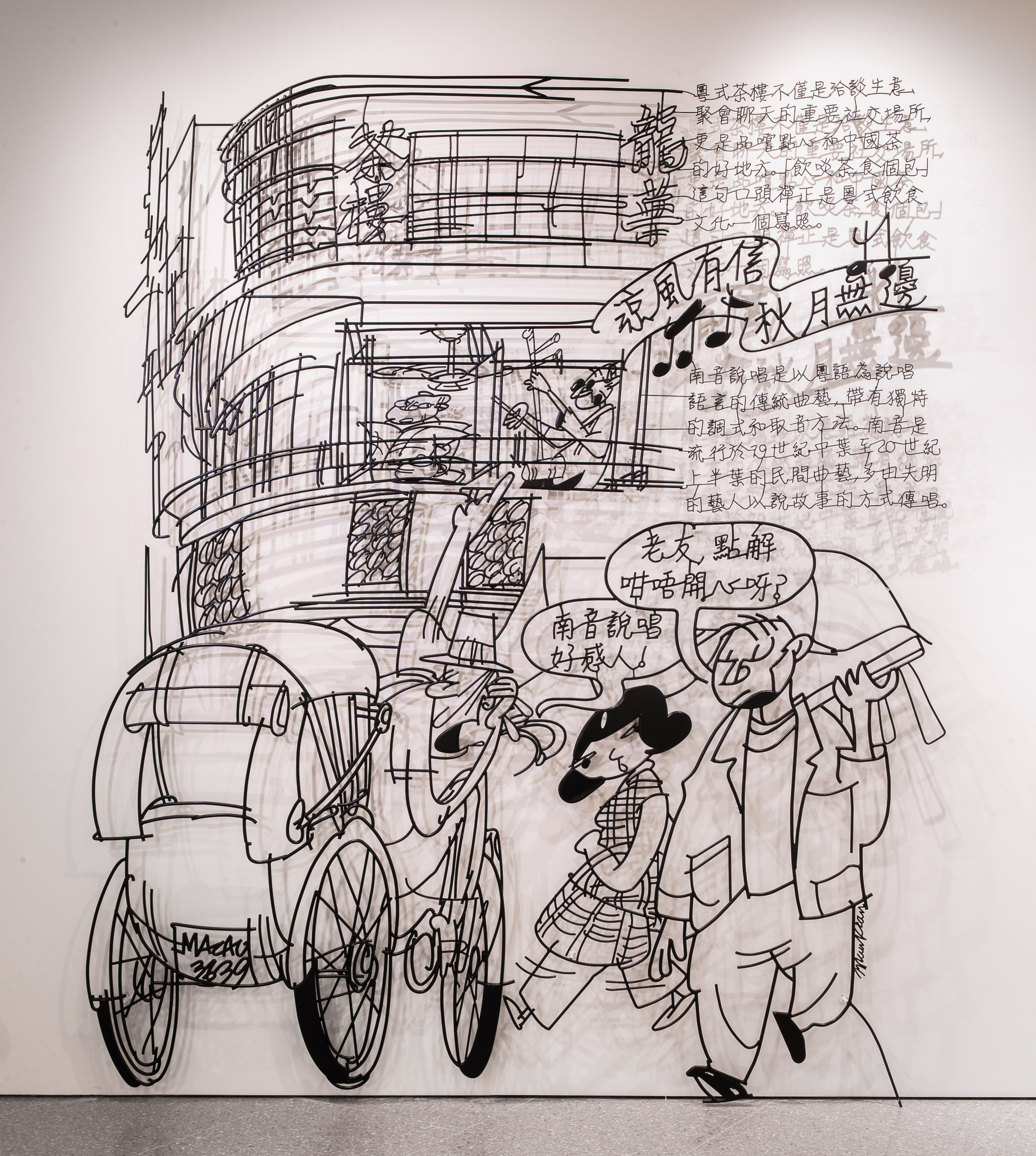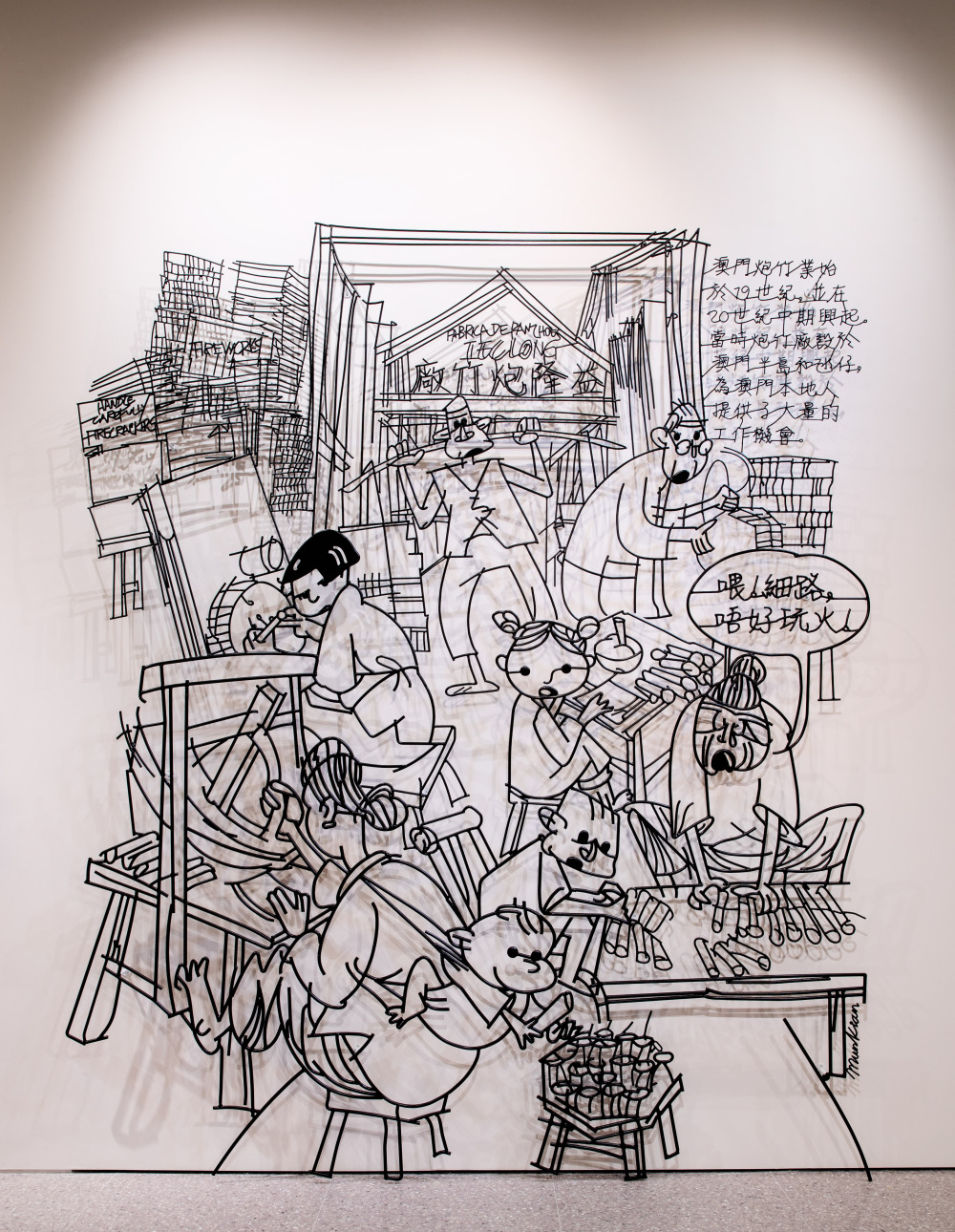

Special Exhibition of “Art Macao: Macao International Art Biennale 2021”
04
Touching Song
- MEDIA
- Welded Steel
- DIMENSION
- 3600H x 3100W
- YEAR
- 2021
CHILDREN'S AUDIO GUIDE
Children’s Audio Guide is only available in Cantonese & Mandarin
NAAMYAM AND TEAHOUSES:
TREASURING THE REMNANTS OF OUR PAST
As life was much simpler back in the day, Cantonese-style teahouses served as a place for locals to meet up, chat, eat dim sum and drink tea.
During the Second World War, locals would often drop by these teahouses in hopes of learning information about the latest war developments. The Cantonese style teahouse therefore performed an important social role as it was a place where customers could exchange the latest news and discuss any and everything, from family matters to state affairs.
Another source of entertainment at the tea house were performances of Cantonese Naamyam, a unique local narrative singing tradition in the Cantonese dialect which gained popularity throughout the 20th century. It has a distinctive method of acquiring its notes and melodies and can best convey the linguistic features of the Guangdong Pearl River Delta residents. Many of the representative works genuinely reflect the hopeless plight and unstable drifting life shared by the lower classes of society. This style of Naamyam is called Dei-Seoi Naamyam, literally translated as “earth and water” Naamyam.
Performed by musicians mostly in homes, restaurants, streets, and even brothels, early Naamyam works were not recorded. During the 1950s, Naamyam was broadcast by Macao’s Vilaverde radio station, with a single narrative song or story lasting months. Such broadcasts were discontinued in the 1960s when western music began to gain popularity, gradually being overtaken by other forms of entertainment.
In 2011, Macao’s Naamyam was included in the 3rd batch of the “National List of Intangible Cultural Heritage”, under the “Narrative/Storytelling Traditions, with Au Kuan Cheong of Macao being the only recognised Master of Naamyam in Hong Kong and Macao.










